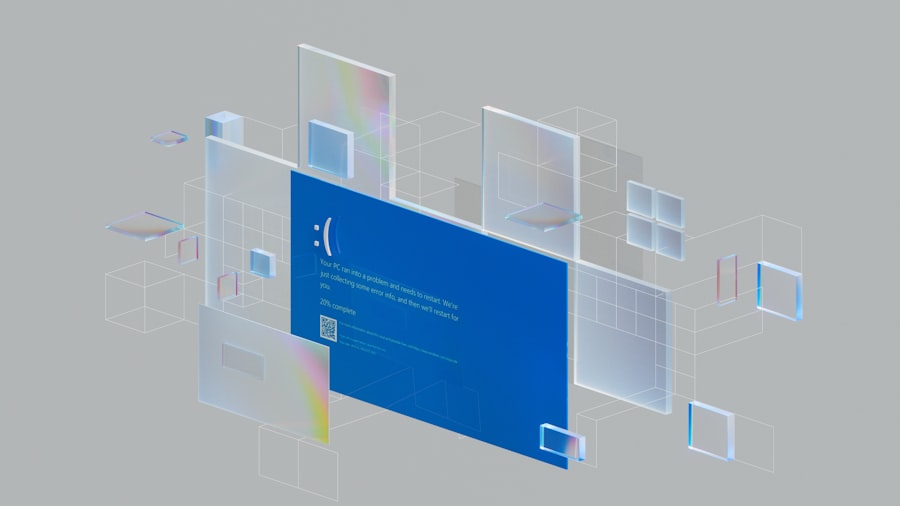In the digital age, the demand for skilled web designers has surged, making a Web Design Certificate Program an attractive option for those looking to enter this dynamic field. These programs are designed to equip students with the essential skills and knowledge required to create visually appealing and functional websites. Typically, a certificate program covers a range of topics, from the foundational elements of web design to advanced techniques that incorporate user experience and search engine optimization.
By enrolling in such a program, individuals can gain a competitive edge in the job market, as employers increasingly seek candidates who possess both technical proficiency and creative flair. The structure of a Web Design Certificate Program often includes a blend of theoretical knowledge and practical application. Students engage in hands-on projects that allow them to apply what they have learned in real-world scenarios.
This experiential learning approach not only reinforces the concepts taught in the classroom but also helps students build a portfolio of work that showcases their skills to potential employers. Furthermore, many programs offer opportunities for collaboration with peers, fostering a community of aspiring designers who can share insights and support one another throughout their learning journey.
Key Takeaways
- The Web Design Certificate Program covers a wide range of topics including HTML, CSS, responsive design, UX/UI, JavaScript, graphic design, CMS, SEO, web analytics, e-commerce, and final project.
- HTML and CSS are the building blocks of web design, and understanding their basics is crucial for creating visually appealing and functional websites.
- Responsive web design and mobile optimization are essential for ensuring that websites are accessible and user-friendly across different devices and screen sizes.
- UX/UI design focuses on creating a positive and seamless experience for website visitors, while JavaScript and jQuery are powerful tools for enhancing web development.
- Integrating graphic design principles, utilizing CMS, implementing SEO strategies, understanding web analytics, and developing e-commerce websites are all important aspects of creating successful and effective web designs.
Understanding the Basics of HTML and CSS
Mastering HTML Tags for Accessibility and SEO
Understanding how to effectively use HTML tags is crucial for building accessible and semantically correct web pages. For instance, using appropriate heading tags (H1, H2, H3) not only organizes content but also enhances search engine optimization by signaling the hierarchy of information.
CSS: Controlling the Visual Presentation
CSS complements HTML by controlling the visual presentation of web pages. It enables designers to apply styles such as colors, fonts, spacing, and layout to HTML elements. By mastering CSS, designers can create visually stunning websites that are consistent with branding guidelines.
Advanced CSS Techniques for Responsive Design
Techniques such as Flexbox and Grid Layout allow for sophisticated designs that adapt to various screen sizes. For example, a designer might use CSS Grid to create a responsive layout that rearranges itself seamlessly on mobile devices, ensuring an optimal user experience across all platforms.
Learning Responsive Web Design and Mobile Optimization
As mobile device usage continues to rise, responsive web design has become an essential skill for web designers. This approach ensures that websites function effectively on a variety of screen sizes, from desktop monitors to smartphones. A key principle of responsive design is fluid grids, which allow layout elements to resize proportionally based on the viewport dimensions.
By employing media queries in CSS, designers can apply different styles depending on the device’s characteristics, such as its width or orientation. Mobile optimization goes hand-in-hand with responsive design but focuses specifically on enhancing the user experience for mobile users. This includes optimizing images for faster loading times, simplifying navigation menus for touch interactions, and ensuring that buttons are large enough for easy tapping.
For instance, a designer might implement lazy loading techniques to defer the loading of images until they are needed, significantly improving page load speed on mobile devices. By prioritizing mobile optimization, designers can create websites that not only look good but also perform well in terms of usability and accessibility.
Exploring User Experience (UX) and User Interface (UI) Design
User Experience (UX) and User Interface (UI) design are critical components of web design that focus on how users interact with websites. UX design encompasses the overall experience a user has while navigating a site, including aspects such as usability, accessibility, and satisfaction. Designers conduct user research to understand their target audience’s needs and preferences, often employing techniques like surveys, interviews, and usability testing.
This research informs design decisions and helps create user-centered websites that resonate with visitors. On the other hand, UI design is concerned with the visual elements that users interact with directly. This includes buttons, icons, typography, and color schemes.
A well-designed UI not only enhances aesthetic appeal but also guides users through their journey on the website. For example, a designer might use contrasting colors for call-to-action buttons to make them stand out against the background, thereby increasing click-through rates. By integrating UX and UI principles, designers can create cohesive experiences that engage users and encourage them to take desired actions.
Mastering JavaScript and jQuery for Web Development
JavaScript is an essential programming language for web development that allows designers to add interactivity and dynamic content to their websites. Mastering JavaScript enables designers to create features such as image sliders, form validation, and interactive maps. By understanding core concepts like variables, functions, and event handling, designers can enhance user engagement through responsive elements that react to user input.
jQuery is a popular JavaScript library that simplifies common tasks and enhances productivity for web developers. It provides an easy-to-use syntax for manipulating HTML documents, handling events, and creating animations. For instance, a designer might use jQuery to implement smooth scrolling effects or to dynamically load content without refreshing the page.
By leveraging jQuery’s capabilities, designers can streamline their workflow and create more sophisticated web applications with less code.
Integrating Graphic Design Principles into Web Design
Graphic design principles play a vital role in web design by influencing how information is presented visually. Key concepts such as balance, contrast, alignment, repetition, and proximity guide designers in creating aesthetically pleasing layouts that effectively communicate messages. For example, balance ensures that visual elements are distributed evenly across a page, preventing it from feeling cluttered or overwhelming.
Contrast is another crucial principle that helps draw attention to important elements on a page. By using contrasting colors or font sizes, designers can highlight calls to action or key information. Additionally, understanding typography is essential for effective communication; selecting appropriate fonts and maintaining consistent styles throughout a website can significantly impact readability and user engagement.
By integrating these graphic design principles into their work, web designers can create visually compelling websites that resonate with users.
Utilizing Content Management Systems (CMS) for Web Design
Content Management Systems (CMS) have revolutionized the way websites are built and maintained by providing user-friendly interfaces for managing content without extensive coding knowledge. Popular CMS platforms like WordPress, Joomla, and Drupal empower designers to create dynamic websites quickly while offering flexibility in terms of design customization through themes and plugins. For instance, WordPress boasts a vast library of themes that allow designers to implement professional-looking layouts with minimal effort.
Moreover, CMS platforms often come equipped with built-in SEO tools and analytics features that help track website performance. Designers can easily update content, manage media files, and implement changes without needing to rely on developers for every modification. This autonomy not only streamlines the workflow but also allows businesses to keep their websites fresh and relevant in an ever-evolving digital landscape.
Implementing Search Engine Optimization (SEO) Strategies
Search Engine Optimization (SEO) is a critical aspect of web design that focuses on improving a website’s visibility in search engine results pages (SERPs). Understanding SEO principles enables designers to create websites that are not only visually appealing but also optimized for search engines like Google. Key strategies include keyword research, on-page optimization, and link building.
Keyword research involves identifying relevant terms and phrases that potential visitors might use when searching for information related to a website’s content. By strategically incorporating these keywords into headings, meta descriptions, and body text, designers can enhance their site’s relevance in search results. On-page optimization also includes optimizing images with alt tags and ensuring fast loading times—both factors that contribute to better search rankings.
Additionally, building high-quality backlinks from reputable sources can further boost a website’s authority in the eyes of search engines.
Understanding Web Analytics and Data-Driven Design
Web analytics is an invaluable tool for web designers seeking to understand user behavior and improve website performance based on data-driven insights. Platforms like Google Analytics provide detailed reports on visitor demographics, traffic sources, page views, bounce rates, and conversion rates. By analyzing this data, designers can identify trends and patterns that inform design decisions.
For example, if analytics reveal that users are frequently abandoning a particular page or section of the site, designers can investigate potential issues such as confusing navigation or slow loading times. A/B testing is another powerful method used in data-driven design; it involves comparing two versions of a webpage to determine which one performs better in terms of user engagement or conversion rates. By leveraging analytics effectively, designers can make informed adjustments that enhance user experience and drive desired outcomes.
Developing E-Commerce Websites and Online Stores
The rise of e-commerce has transformed the retail landscape, making it essential for web designers to understand how to create effective online stores. E-commerce websites require unique considerations such as product display optimization, secure payment processing systems, and user-friendly shopping carts. Designers must ensure that product images are high-quality and visually appealing while providing detailed descriptions that help customers make informed purchasing decisions.
Additionally, implementing features like customer reviews and ratings can enhance credibility and encourage conversions. Security is paramount in e-commerce; therefore, integrating SSL certificates for secure transactions is crucial for building trust with customers. Furthermore, optimizing the checkout process by minimizing steps can reduce cart abandonment rates—a common challenge faced by online retailers.
Final Project and Certification Process
The culmination of a Web Design Certificate Program typically involves a final project that allows students to showcase their skills in a comprehensive manner. This project often requires participants to conceptualize and develop a fully functional website from scratch or redesign an existing site based on specific criteria provided by instructors. The final project serves as an opportunity for students to apply everything they have learned throughout the program while demonstrating their creativity and technical abilities.
Upon successful completion of the program requirements—including coursework assignments and the final project—students receive their certification in web design. This credential not only validates their skills but also enhances their employability in a competitive job market. Many programs also offer career services such as resume workshops or job placement assistance to help graduates transition into professional roles within the web design industry.
If you are interested in obtaining a certificate in web design, you may want to check out this article on 10 Essential Skills Every Web Designer Should Have. This article provides valuable insights into the key skills that are necessary for success in the field of web design. By honing these skills, you can enhance your abilities and increase your chances of obtaining a certificate in web design.
FAQs
What is a certificate of web design?
A certificate of web design is a document that certifies an individual’s proficiency in web design skills and knowledge. It is typically awarded upon completion of a web design course or program.
What are the benefits of obtaining a certificate of web design?
Obtaining a certificate of web design can demonstrate to potential employers or clients that an individual has the necessary skills and knowledge to design and create websites. It can also enhance credibility and open up opportunities for career advancement.
What skills and knowledge are typically covered in a web design certificate program?
A web design certificate program typically covers topics such as HTML, CSS, responsive design, user experience (UX) design, and graphic design principles. It may also include training in web development tools and software.
Are there different types of web design certificates available?
Yes, there are various types of web design certificates available, ranging from basic introductory certificates to more advanced and specialized certificates in areas such as front-end development, UI/UX design, and e-commerce design.
How long does it take to earn a certificate of web design?
The time it takes to earn a certificate of web design can vary depending on the program and the individual’s schedule. Some programs may be completed in a few months, while others may take a year or more to complete.
Are there any prerequisites for enrolling in a web design certificate program?
Prerequisites for enrolling in a web design certificate program can vary, but many programs do not require any prior experience or education in web design. Some programs may have basic computer or design skills as prerequisites.


